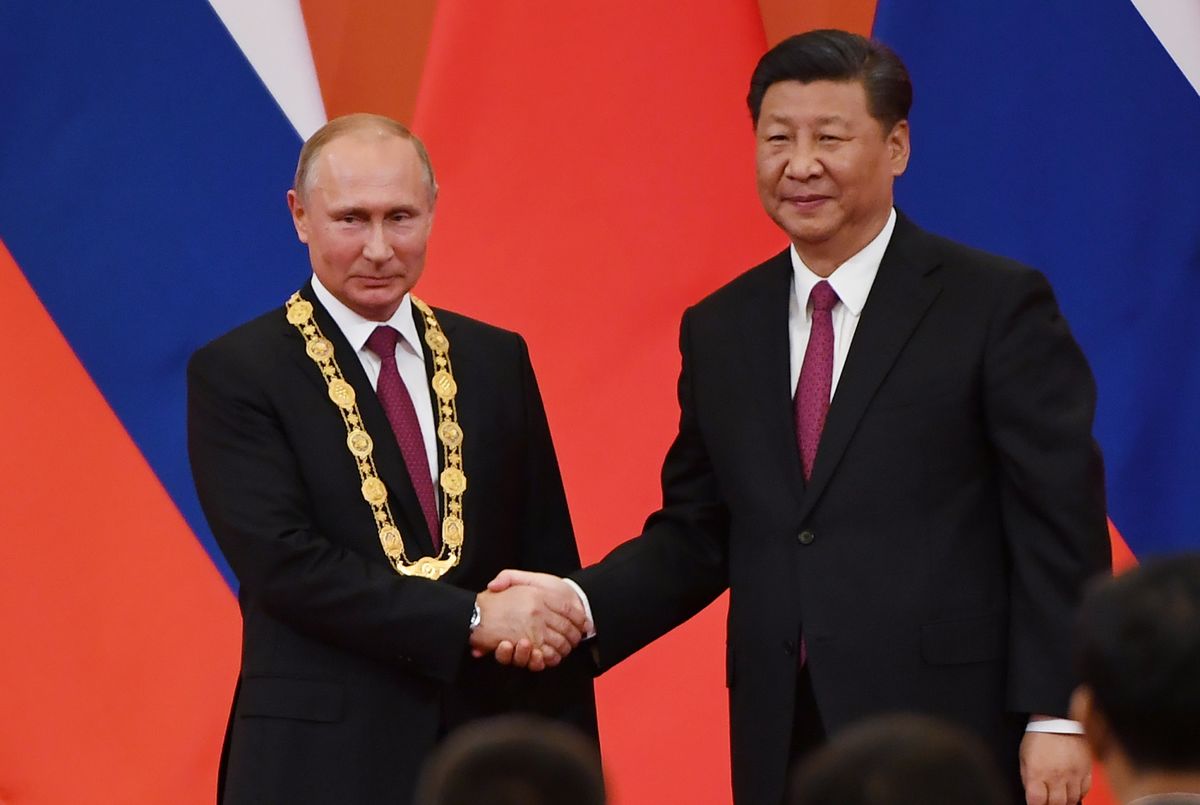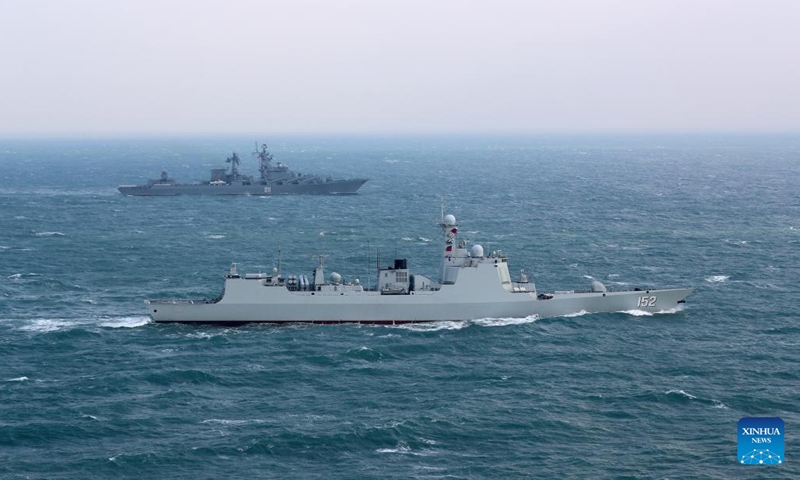In yet another display of military cooperation amid tensions with the US, ships from the Russian Federation and China successfully destroyed a simulated enemy submarine during the “Joint Sea-2024” exercise.
These exercises in the South China Sea—a region currently experiencing heightened tension between China and the United States—underscore Moscow and Beijing’s growing strategic partnership.
The Joint Sea-2024 exercise began on July 15 at an undisclosed military port in Zhanjiang, Guangdong province, in southern China. It is scheduled to conclude on July 17.
According to Russian media, the exercise marks the thirteenth iteration of the Maritime Interaction series, an annual event since 2012. However, the origins of these joint naval exercises date back to 2005, when the first such event was held in the Yellow Sea.
The joint detachment includes the Russian Pacific Fleet corvettes “Loud” and “Rezky,” three warships, and one auxiliary vessel from the PLA Navy.
On July 15, the first day of the “Maritime Interaction-2024” exercises, crews from Russia’s Pacific Fleet and the People’s Liberation Army Navy (PLA Navy) engaged in anti-submarine warfare drills and conducted artillery firing exercises.
The joint effort involved detecting and conditionally destroying a simulated “enemy” submarine using rocket bomb launchers in the South China Sea. The ships also fired artillery at designated sea targets, demonstrating their combat readiness and interoperability.
The Russian Navy’s Pacific fleet press service did not specify the origin of the enemy submarine. However, considering the exercise was conducted in the South China Sea, it is likely that the simulated target was meant to imitate a submarine from the United States.
Meanwhile, in the lead-up to the main exercises, Russian and Chinese warships conducted joint patrols in the western and northern Pacific.
These patrols included practicing search and arrest operations. Notably, during a simulation in the Philippine Sea, the Chinese frigate Hengshui was used as a “suspicious vessel.”
The operations involved stopping and searching the vessel, supported by helicopters from the Chinese destroyer Yinchuan and the Russian corvette Sovershenny.
‘Raptor Salad’ For Lunch! US F-22 Raptor Outgunned, Outmaneuvered By German Eurofighter Typhoon?
The drill concluded with the simulated arrest of the ship’s captain after weapons were found onboard, as reported by the Russian state-owned Sputnik News.
Coordinating joint search efforts will be a key component of the maneuvers, with a focus on assisting a distressed submarine in an emergency and rescuing sailors from the water.

Is the Russian Navy Assisting China in Understanding NATO Technologies?
The PLAN and Russian Navy stated that their joint maritime patrol was not directed at any third parties and was not related to the current international and regional situations.
Captain 1st Rank Alexei Antsiferov, commander of the Russian ship detachment, said that the alliance did not threaten other states but rather symbolized the maintenance of stability in the Asia-Pacific region.
The exercises, according to the Chinese Ministry of Defense, were designed to strengthen both countries’ capacities and resolve to work together to counter threats to maritime security and uphold regional and international peace. The exercises also seek to reinforce China and Russia’s all-encompassing strategic cooperation and partnership.
However, these exercises come at a time of heightened tensions between China and the Philippines in the region.
Due to the Philippines’ active involvement in military partnerships with the United States and other allied nations, China has been escalating its military presence in the region, frequently in conjunction with the Russian military, as demonstrated by their recent naval exercises.

According to Russian media, the primary aim of these joint naval maneuvers is to develop and refine common operational protocols between the two navies and to exchange valuable technical expertise.
The Russian media has stated that these exercises are aimed at improving the capacity of both Russian and Chinese forces to work together more effectively in various maritime scenarios.
The Russian Navy leads the way in developing strategies to combat advanced threats like unmanned combat boats, drones, and NATO cruise missiles.
These technologies are critical in modern naval warfare and could be employed in potential conflicts involving the PLA Navy. Specifically, such strategies could be crucial in scenarios such as conflicts over Taiwan or territorial disputes in the South China Sea.
On the other hand, in response to this burgeoning cooperation between Russia and China, the United States has taken proactive measures to boost its regional alliances.
The Joint Sea-2024 exercises followed shortly after the completion of trilateral drills involving the US, Japan, and South Korea. The exercise, “Freedom Edge,” was conducted in the East China Sea near Jeju Island from June 27 to June 29, 2024.
This trilateral drill highlighted Washington’s efforts to fortify its alliances with nations that perceive increasing threats from China’s expanding military presence and maneuvers.
- Contact the author at ashishmichel(at)gmail.com
- Follow EurAsian Times on Google News




